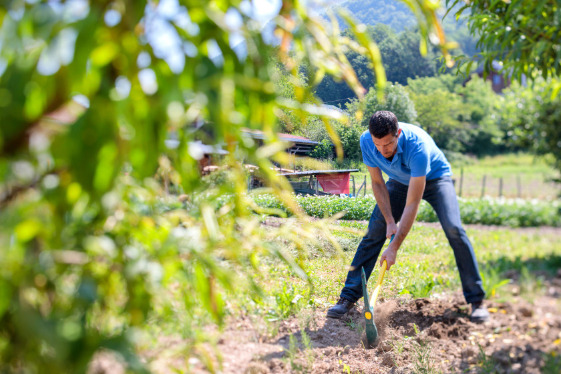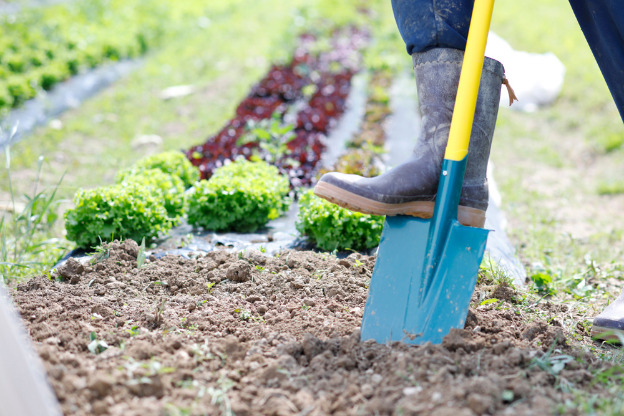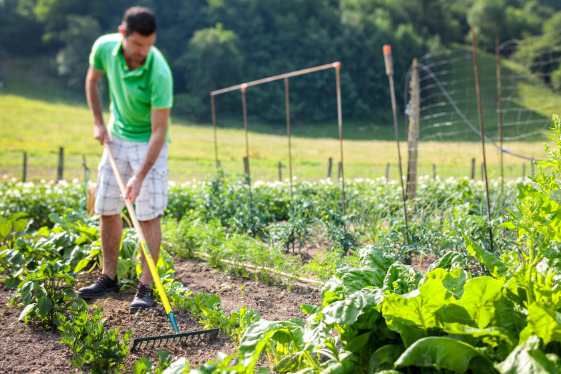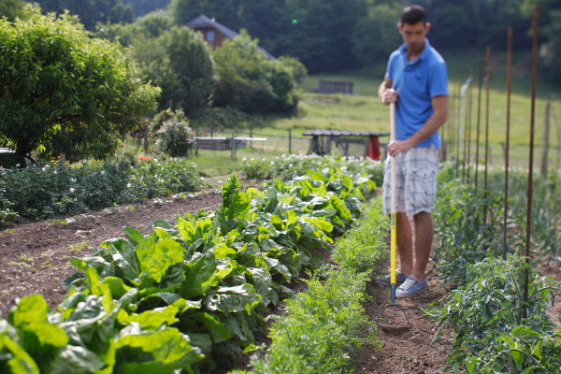Prepare and maintain your vegetable garden
Whether you want to clear a field or to do regular maintenance of the earth between vegetable plants, working in the vegetable garden requires the appropriate tools in order to work efficiently and at the same time limit the amount of physical effort.
Clearing the ground, a field
You have noticed a nice, sunny spot in your garden, near a water supply, in a word, the perfect place to make your vegetable garden. But for the moment, what needs to be done is to prepare the ground which is overgrown with weeds, shrubs and other unearthed surprises!
First of all, take a railroad pick, its peen side will be useful to break the hardened surface, to dig and to cut roots. As for the pick side, it is suitable for digging in stony ground, for removing stones and stumps. To tackle shrubs, the pick axe will be very helpful for cutting large roots. To remove stones, the miner’s bar will be the best solution.
The shovel, which may be oval or square shape, will be used to move earth. And the DuoPro rake with curved tines will be used to pick up uprooted plants and uncovered stones easily.
There is also the folding shovel-pick axe which can be screwed into three different positions : when unfolded it can be used as a shovel ; in the intermediate position, it can be used as a pick axe and when completely folded up it can be easily stowed in the car and it is particularly useful when camping.

Autumn digging to put vitality back in your garden
Loosening the earth, hardened by the year’s crops, rain and the gardener walking through the garden, is essential to encourage the flow of water, air and roots. In addition to digging over the soil, weeding should also be done in order to prepare a bed that will be beneficial to seed growth.
To make the gardener’s job easier, the work should be done in the autumn a few days after rain, when the soil is still soft but not water-logged. Afterwards, leave the winter frost to break up the clumps of soil, this will save the gardener some unnecessary work. If the clods of earth are too hard, and to loosen the soil, use a claw or a hook and finish off by raking to make the soil fine and to level the ground.

The type of terrain will determine which tool is best adapted for digging the earth
In light or sandy soil, a spade will suffice. Some types of spade have foot rests which give better support for the foot, and therefore the tool will penetrate into the soil better. This foot rest also prevents the edge of the tool from cutting the sole of boots.
In compact or stony soil the edge of the spade or draining spade tends to jam on large stones which stop the blade from digging deeply. In this case, it is preferable to use a digging fork as the tines pass through the stones more easily. As well as digging over soil, the spade, draining spade or digging fork are used to pull up plants and shrubs and for planting. (Go to draining spade and FAB Pro) also for removing stones, digging around the foot of trees to unearth pests like larvae or for burying a layer of plant matter to act as green fertilizer.
Planting
seeds, transplanting
Planting
seeds, transplanting
It is April already and your vegetable garden is all ready for sowing, and then, when the weather is a little warmer, for planting out your seedlings, grown under glass and which are waiting patiently in their little pots, sheltering from the frost.
Radishes, beans, carrots… plant seeds with the combined hoe and fork
After using a garden line to mark out a straight path to enable you to walk in your vegetable garden, use the combined hoe and fork peen and tongue to mark rows with a space of a few centimetres between rows ( the exact number of centimetres depends on the type of vegetable planted, for example for radishes the space between each row should be 10cm, for carrots or beans a space of 20cm is necessary) then, sow the seeds and use a rake to cover them with a thick layer of soil and finally tamp down using the back of the rake.
Tomatoes, sweet peppers, aubergines…….use the trowel
Tomatoes, sweet peppers, aubergines…….use the trowel
First sow the seeds in small pots in April for tomatoes, cucumbers, sweet peppers, aubergines, artichokes….these should be planted out in May to June, depending on the climate in your region. For this operation use a trowel to dig a hole deep enough for the earth surrounding the roots.
Here, let us draw your attention to the ergonomic handle of the professional trowel, made of two materials, it is perfectly adapted for use by professionals. The protection along the shank of the tool makes it the ideal tool for using « upside down » to make a hole for planting out seedlings and planting bulbs.

Maintaining the vegetable garden by weeding without using chemical products
Once you have made your garden you need to maintain it otherwise your plants will be overrun by all sorts of unwanted weeds. Instead of using chemical products there are tools which are just as effective for weeding and which respect the environment.
The hoe is used for loosening the surface soil, aerating and weeding thanks to its wide blade designed to cut the roots of weeds. In rough ground or to reach the deepest roots use the scraper. You could also choose the Dutch hoe, either pushed or pulled, with a sharp blade which cuts roots. Hoes, scrapers and Duopro scrapers, designed with assistance from parks and gardens professionals, are particularly effective and can stand up to the repeated strain they endure during regular use.
When weeds are firmly rooted and resist, do not hesitate to use a three-prong digging claw. Ideal for weeding around the base of plants.

